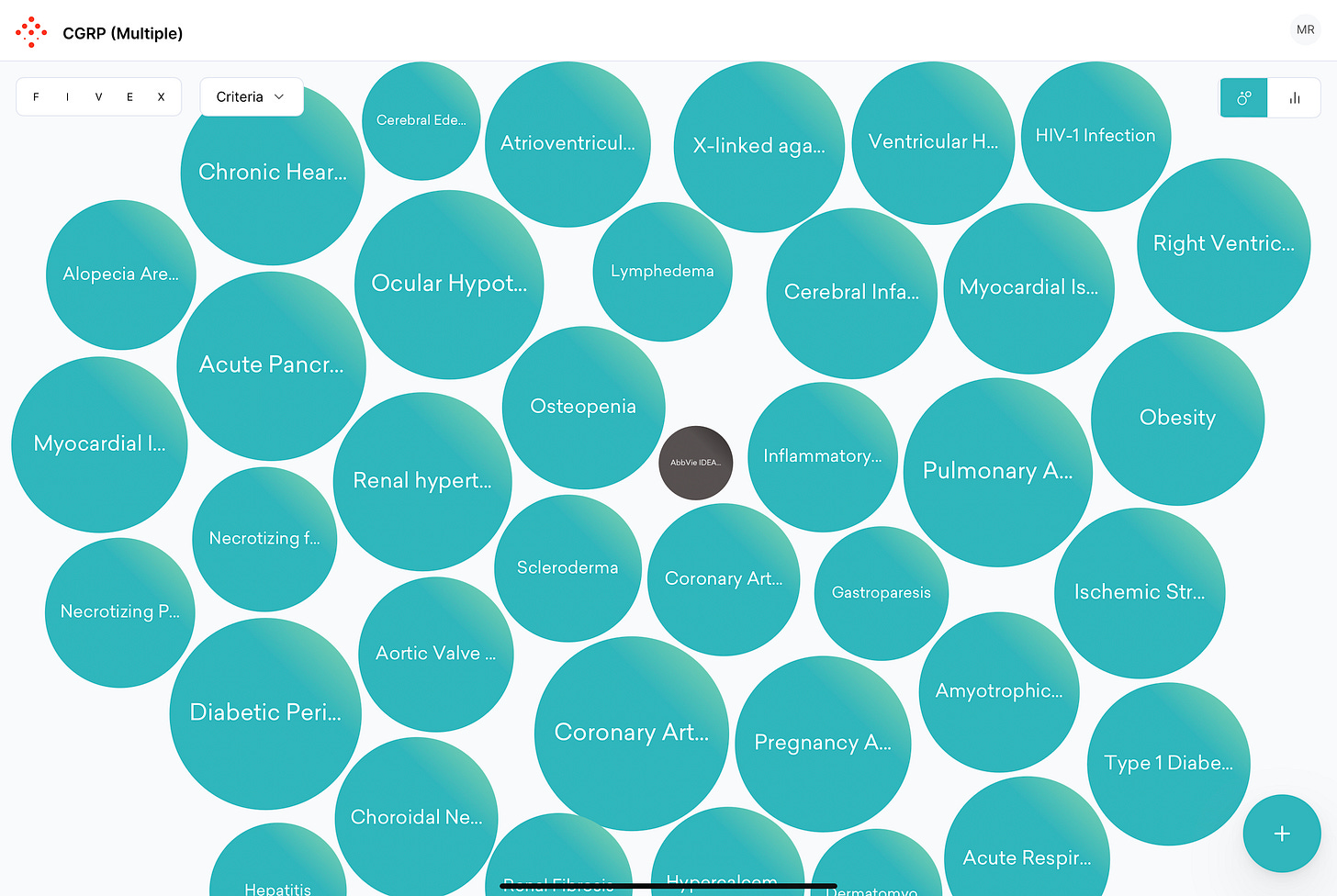What defines an opportunity? And what is its cost? Where in your portfolio is the consideration of ‘opportunity cost’?
Most portfolios and pipelines consider the cost of getting a product to a destination, the risk, and the value to be found in getting there. What they don’t typically show is the opportunities that weren’t chosen. As Matthew Hennessy would say, “Opportunity cost is the value—to you—of whatever it is you’re missing out on.”
There are two ways to make early phase decisions: simplify or whatever-the-opposite-of ‘simplify’ is… (When I looked for antonyms of ‘simplify’ I was disappointed… complicate, complex, complexify, perplex, sophisticate, entangle, combine, blend, amalgamate, fuse, mix, compound, admix, put together… I’ll use ‘complexify’ for now, but I remain unhappy about it…)
However, we rarely are looking at a simple fork in the road, an A/B decision, where B might be estimated but not chosen.
Here’s a screenshot from when we embarked on evaluating the opportunity for something as ‘simple’ as a CGRP antagonist. (These are all putative causal associations, the usual starting point for our process - nothing more than that at this stage.)
The ‘traditional’ approach would look at that opportunity landscape, say ‘it’s impossible to do all of those’ and ignore them. A cold, final ‘ignore’. Better in that ‘simplify’ model to look at one deeply than one hundred. But what would be the basis for choosing one, and how likely do you think it would be to be proven right? So, the TPP approach picks, simplifies and then pretends the rest don’t exist on the way to an eNPV that overfits a model to a bad decision. The opportunity cost is never estimated.
Were you to ‘complexify’, you would accept that they are real, even if poorly characterised, and lean into it. It’s more work, but you no longer have to pretend those other opportunities are not there.
Your choice of weighting of ‘opportunity’ is important, of course - you don’t want what most companies do now, with arthritic process. You want ‘3 second answers’ vs the 3 month answers.
The first time you do it this way is harder than the second (after all, the addressable markets should be the same for every evaluation, unless you’re doing it wrong, for example). But what you have in this model is a picture of opportunity lost, and therefore opportunity cost. The ‘simplify’ process knows there is opportunity cost, but pretends there isn’t. Perhaps the word ‘sophisticate’ is better than ‘complexify’ here, as this process is objectively smarter.
You may not know everything, but you probably know something about all of those opportunities. It is easy when you click into one to be able to fill out to some level… Just because you don’t have 2 decimal place estimates today doesn’t mean you can’t do ‘high/ medium/ low’ or a 5-point guess in an afternoon… But you do have more than that, I suspect. (It is ironic that McK value the smarts that would get people a job there and then train it out of them… ‘How many windows in NYC?’ is a learning question, not a knowing question.)
The value of the ‘complexify’ model is that it allows nuance, and opportunity-seeking behaviour (in fact, it requires it). It demands an approach to learning rather than knowing - in the face of 100 options, your choice is to begin to learn rather than to decide. How do you address the uncertainty, rather than ignoring it?
The other critical dimension to opportunity-seeking behaviour in early phase is that it treats time as a dimension - being first to a space is not the same as being third to the same space, for example. It also examines the value of any exploratory research to a future decision. A decision to delay phase I or phase II ‘until some science is done’ has a cost - it may add value to a future decision, but it may also not do that. Whereas the cost of being late may be estimable. We all know those drugs - the scientists will always want to ‘follow the science’, and do a little bit more, gather a little more data, but they are eating opportunity while they do it. You should know the cost of that opportunity.
Maintaining a team in opportunity-seeking mode is like neoteny, a pluripotent development - it is ready/ aim/ fire instead of fire/ aim/ ready… People may think it costs more, but they’re ignoring the costs they didn’t count.





